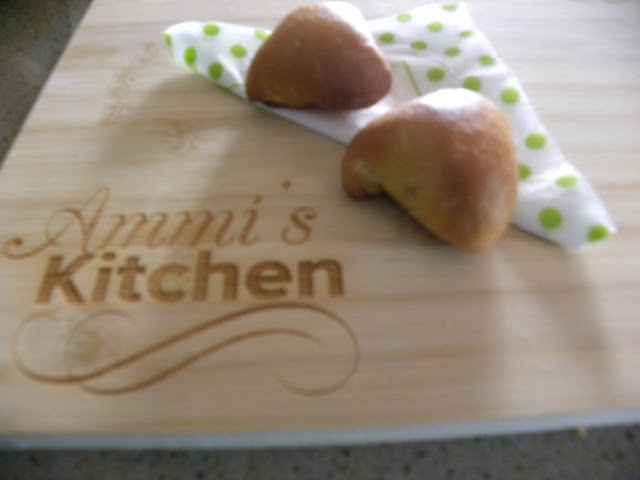What do you do when you have a lot of spinach from your garden?
I usually make feta and spinach pastries which are a kind of a middle eastern snack flavoured with a touch of nutmeg.
Today I went into the garden to pick some herbs but found that my New Zealand spinach has become a small jungle so I had to pick about three large handfuls of it.
I found an unopened packet of Feta cheese in the fridge but I was too lazy to make a batch of pastries and I needed to make a quick dinner dish.
Using the idea of using Feta and spinach, I created this quick fix tart which took me less than 45 mts to make along with a tomato, garlic and basil soup and voila! dinner was done.
2 sheets of short crust or flaky pastry (I used Edmond's ready roll pastry)
2-3 handfuls of fresh spinach (I am sure you can use frozen if you don't have fresh)
half a block of Feta cheese crumbled
2 tbsps. grated cheese ( I used Edem)
1 egg, beaten
1/4 cup cream or milk or almond milk
salt and pepper to taste
1 onion chopped
1 tbsp. olive oil
Method:
Boil a kettle of water. Pour water over the picked and cleaned spinach placed in a large bowl. Leave for 5 mts, .Drain and leave to cool. Squeeze out water and chop coarsely. Leave aside.
Heat olive oil in a pan. Saute onions till transparent,. Add the spinach and cook for a minute. Leave to cool.
Line the tart tin with pastry. Prick with a fork.
Whisk the egg and add the milk. Mix in with the spinach, feta and the cheese. Season with salt and pepper. If the feta is salty, there is no need to add salt.
Spoon the filling on to the pastry base. Level top and sprinkle some extra cheese on top.
Bake in a preheated 350 F/180 C oven for about 25-30 mts.
Serves 2-3 as a light meal.
Chop the basil leaves finely and sprinkle on the soup before serving.
I usually make feta and spinach pastries which are a kind of a middle eastern snack flavoured with a touch of nutmeg.
Today I went into the garden to pick some herbs but found that my New Zealand spinach has become a small jungle so I had to pick about three large handfuls of it.
I found an unopened packet of Feta cheese in the fridge but I was too lazy to make a batch of pastries and I needed to make a quick dinner dish.
Using the idea of using Feta and spinach, I created this quick fix tart which took me less than 45 mts to make along with a tomato, garlic and basil soup and voila! dinner was done.
Spinach and two cheese tart
2 sheets of short crust or flaky pastry (I used Edmond's ready roll pastry)
2-3 handfuls of fresh spinach (I am sure you can use frozen if you don't have fresh)
half a block of Feta cheese crumbled
2 tbsps. grated cheese ( I used Edem)
1 egg, beaten
1/4 cup cream or milk or almond milk
salt and pepper to taste
1 onion chopped
1 tbsp. olive oil
Method:
Boil a kettle of water. Pour water over the picked and cleaned spinach placed in a large bowl. Leave for 5 mts, .Drain and leave to cool. Squeeze out water and chop coarsely. Leave aside.
Heat olive oil in a pan. Saute onions till transparent,. Add the spinach and cook for a minute. Leave to cool.
Line the tart tin with pastry. Prick with a fork.
Whisk the egg and add the milk. Mix in with the spinach, feta and the cheese. Season with salt and pepper. If the feta is salty, there is no need to add salt.
Spoon the filling on to the pastry base. Level top and sprinkle some extra cheese on top.
 |
| Before baking |
Bake in a preheated 350 F/180 C oven for about 25-30 mts.
Serves 2-3 as a light meal.
 |
| Ready for serving with tomato soup |
Home made Cream of Tomato Soup
Ingredients:
3 large tomatoes
1 1/2 cups stock ( home made or using stock powder/cube)
1 small onion chopped
2 cloves of garlic chopped
salt and pepper to taste
1/2 cup cream, milk or almond milk
1 tbsp. olive oil
fresh basil leaves to serve
Method:
Boil some water and cover the whole tomatoes in boiling water. Leave for 5 mts. Then immerse tomatoes in cold water. Drain and peel tomatoes. Chop roughly.
Heat the oil in a medium saucepan. Saute the onion and garlic till transparent.
Add the chopped tomatoes and cook for about 5-7 mts until the tomatoes are cooked. Add the stock and cook for another 5 mts or so. Leave to cool for about 10n mts.
Blend the tomatoes using a stick mixer/blender or food processor.
Place the soup back in the pan and add the cream or milk.
Stir and bring to the boil. Season to taste with salt and pepper.
Ladle into bowls.
Chop the basil leaves finely and sprinkle on the soup before serving.
(serves 3)
i




























